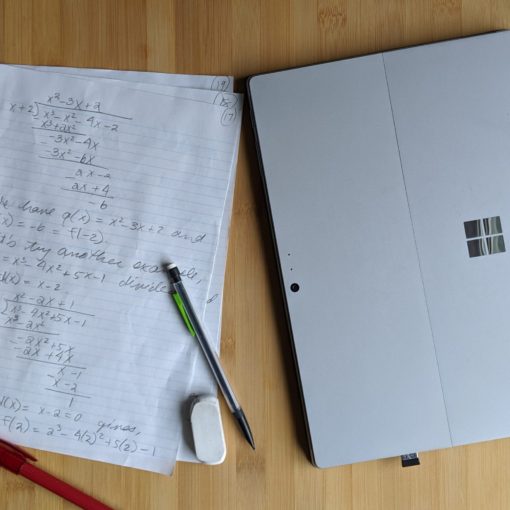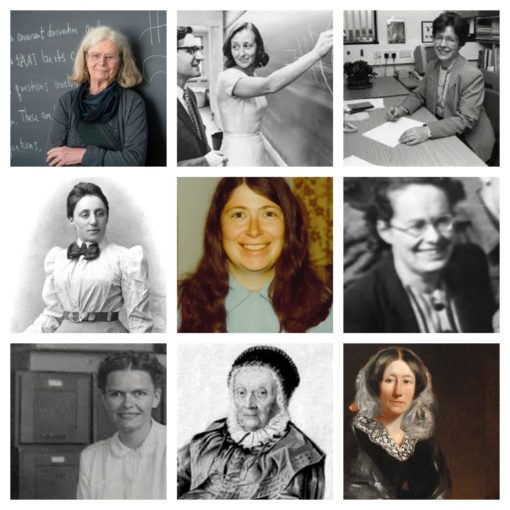While February is traditionally black history month this does not mean this is the only time to celebrate the contributions of black mathematicians. Below is a short list of famous black mathematicians.
Banjamin Banneker (1731-1806) was a self educated mathematician, astronomer. Free black man. He owned a farm near Baltimore. and when he was young he built a wooden clock that kept time. In the late 1700s he made astronomical calculations and predicted a solar eclipse that occurred in 1789. Bannaker opposed slavery and advocated civil rights. In 1971 he wrote Thomas Jefferson a letter asking for his aid in bringing about better conditions for African Americans. https://www.britannica.com/biography/Benjamin-Banneker
Elbert Frank Cox (1895 – 1969) was an American Mathematician. Not only was Elbert Cox the first African American to receive a PhD in mathematics but he was also the first Black in the world to receive a PhD in mathematics. He worked and taught at Howard University for most of his career. Here he taught along side the second and third Mathematics PhD’s in and then later with mathematics, George Butcher and David Blackwell, other notable black mathematicians. https://www.biography.com/scientist/elbert-frank-cox
David Blackwell (1919 – 2010) – American statistician and mathematician. He made contributions to game theory, probability theory, information theory and Bayesian statistics. He was the first African American member of the U.S. National Academy of Science in 1965. https://www.britannica.com/biography/David-Blackwell
Katherine Johnson (1918 – 2020) Katherine Johnson was one of three black students to integrate West Virgina’s graduate schools. Katherine had a particular aptitude with numbers. By 13 she was attending high school; at 18 she enrolled in college; in 1937 she graduated with highest honours and started teaching at a black public school in Virgina. Katherine Johnson was among the first black students at the integrated graduate flagship school in West Virgina State in 1939. In 1953 she joined the all-black West Area Computing section at the National Advisory Committee for Aeronautics which was headed by Dorothy Vaughan. Here she spend four years analyzing data from flight test and investigated plane crashed caused by wake turbulence. Johnson went on to be an integral part of NASA and retired in 1986 after 33 years. In 2015 she was awarded the presidential medal of freedom by Barack Obama. https://www.nasa.gov/content/katherine-johnson-biography
Dorothy Vaughan (1910-2008) American mathematician and computer programmer. She made contributions to the early years of US space program. She was the first African American manager at the National Advisory Committee of Aeronautics, later becoming NASA. Dorothy Vaughan earned a degree in mathematics in 1929 from Wilberforce University. She worked as a math teacher in Virginia. In 1943 she started working for NACA’s West Area Computing unit, an African American group of female mathematicians, of “human computers”. They performed complex computation and analysis of data for aerospace engineers. She was the head of the West Computers until 1958. At this time NACA was incorporated into NASA which closed the segregated facilities. She and many others of the West Computers joined the NASA analysis and computation division. This was a division of NASA made up of men and women of all races. Electronic computer were being used by the space program and Vaughan became and expert at FORTRAN. She retired from NASA in 1971.
A film based on the book Hidden Figures: The American Dream and the Untold Story of the Black Women Mathematicians who helped win the space race, was made into a movie about the West Computers including Vaughan, Johnson and Jackson. https://www.britannica.com/biography/Dorothy-Vaughan
Dudley Weldon Woodard (1881 – 1965) A gifted mathematics teacher. He was the second African American to receive a PhD in mathematics which he achieved at Penn in 1928. Dudley Woodard taught at schools such as Tuskegee Institute, Howard University and University of Chicago. He had been teaching mathematics for over 20 years before taking a leave from teaching at Howard University to complete his PhD. After which he returned to Howard and continued with career and retiring in 1947 as chairman of the department. He established a graduate program in mathematics, created a mathematics library, sponsored visiting professorships and scholarly seminars. https://www.math.upenn.edu/about/department-history/pioneer-african-american-mathematicians http://www.myblackhistory.net/Dudley_Woodard.htm
Elbert Frank Cox (1895 – 1969) Cox is the first African American to earn a Phd in Mathematics. He taught for 40 years at West Virginia State College and Howard University. After finishing university in 1971, Cox served in World War I after which he started a career in teaching. Elbert Cox completed his Phd in 1925 as the first African American to ear the degree in the USA and the in the world. He then taught at West Virginia State College and then at Howard University . He retired in 1965. https://www.biography.com/scientist/elbert-frank-cox http://www.math.buffalo.edu/mad/PEEPS/cox_elbertf.html
Euphemia Lofton Haynes (1980-1980) was the first African American woman to receive a Phd in mathematics. She received a masters of Education from the University of Chicago in 1930 and also founded the mathematics department at Miner Teachers College (University of the district of Columbia) – institution in Washington dedicated to training African American teachers. She taught at all levels including elementary and high school. She held many significant administrative roles such as chair of the mathematics department at Paul Laurence Dunbar high school, a premier high school for African Americans; chair of the division of mathematics and business education at the District of Columbia Teachers College. She retired in 1959 after which she became more active in the Roman Catholic Church. She went on to found the Catholic Interracial Council of the District of Columbia and earned the medal of Pro Ecclesia et Pontifice from Pope John XXIII in 1959. She was president of the Columbia Board of Education from 1966-1967. She fought racial segregation within the school system. https://www.britannica.com/biography/Euphemia-Lofton-Haynes
Ernest Wilkins (1923 – 2011) started at University of Chicago in 1936 at the age of 13. He was the youngest student ever to attend the university. Ernest graduated with a mathematics degree in 1940 at the age of 17 receiving much publicity. He continued on to complete his masters and then a Phd at Chicago in 1942 at 19 years old. He achieved, contributed and held many significant positions throughout his career. These included teaching at Tuskegee Institute, where most students were black; working on the Manhattan project in the metallurgical Laboratory from 1944-1946; wrote papers in various areas of mathematics including differential equations, calculus, statistics, biophysics to name a few. He also worked in industry including at General Atomic Company in 1960s and then back to academia at Howard University in 1970s. Here he established a Phd program in mathematics which became the first traditional black university to have such a program. During the late 1970s and into the 1980s Wilkins worked at EG&G Idaho and became the Vice President and Deputy General Manager for Science and Egnineering. http://mathshistory.st-andrews.ac.uk/Biographies/Wilkins_Ernest.html
Kelly Miller (1863-1939) was a mathematician and political activist. He completed his BA at Howard University. Kelly Miller was the first graduate student at Johns Hopkins University in 1887 where he studied mathematics and physics. He completed his graduate work with Captain Edgar Frisby and English mathematician at the US Naval Observatory. He taught mathematics at M Street High school and then was hired by Howard University as professor of Mathematics. This is where he spent the majority of his career and made a number of contributions. He both taught mathematics at Howard and earned and MA and LLB from the Law School at Howard. Kelly helped found American Negro Academy, the first organization for black intellectuals. He helped organize the sociology department at Howard. He served as dean of the College of Arts and Sciences at Howard. After 50 years at Howard he retired in 1931. https://www.blackpast.org/african-american-history/miller-kelly-1863-1939/
Majorie Lee Browne (1914-1979), in 1949, was the third African American woman to earn a Phd in her field. Browne started her education career at LeMoyne High School, a private school catering to black students. After which she attended Howard University and graduated in 1935. She completed her masters and PhD from the University of Michigan. After completing her Phd she joined the faculty at North Caroline College (now North Carolina Central University). She was appointed chair of the department in 1951. During her time as chair she helped the school pioneer some of the earliest computer use in her field.
In 1960 she received a $60K grant from IBM to set up an electronic computer centre. In the 1950s she was awarded a Ford Foundation grant than enabled her to attend Cambridge University. Here she studied topology that became her specialty. She received many other grants including grants that brought her to University of California in Los Angeles and Columbia University. https://www.biography.com/scholar/marjorie-lee-browne
Mary Jackson (1921-2005) was one of a the “human computers” that worked at NASA during the Space Age. She later became NASA’s first black female engineer. She earned a bachelors degrees in mathematics and physical science from Hampton Institute in 1942. Before working at the National Advisory Committee for Aeronautics (now NASA) she worked as a teacher, bookkeeper and receptionist. At the beginning of her career at NACA segregation was still enforced in Virginia. Restrooms were still designated “white” or “coloured”; blacks could not select their food at the cafeteria but rather make food requests and then eat at their desks. After months of “separate and unequal” accommodation Jackson considered resigning but a chance meeting with a supervisor she decided to stay. The supervisor listened to her complaints and invited her to work for him. During her work with him he noticed her potential and encouraged her to study engineering. She was promoted to aeronautical engineer over time. Her expertise slowly became working with wind tunnels and analyzing data on aircraft flight experiments. She also helped other women and minorities advance in their careers over her lifetime and served as the Federal Women’s program manager in the office of Equal Opportunity Programs and as the Affirmative Action program manager. https://www.biography.com/scientist/mary-winston-jackson
This is a short list of the amazing things black mathematicians have contributed to the field of mathematics.
References:
- https://famous-mathematicians.com/10-famous-black-mathematicians-and-their-contributions/
- https://www.mathscareers.org.uk/article/five-famous-black-mathematicians/
- https://www.biography.com/scientist/elbert-frank-cox
- https://en.wikipedia.org/wiki/List_of_African-American_mathematicians
- https://blogs.scientificamerican.com/roots-of-unity/the-voices-of-black-mathematicians/
- https://blogs.ams.org/blogonmathblogs/2016/02/15/black-history-month-mathematicians/
- http://www.gradeamathhelp.com/black-mathematicians.html



